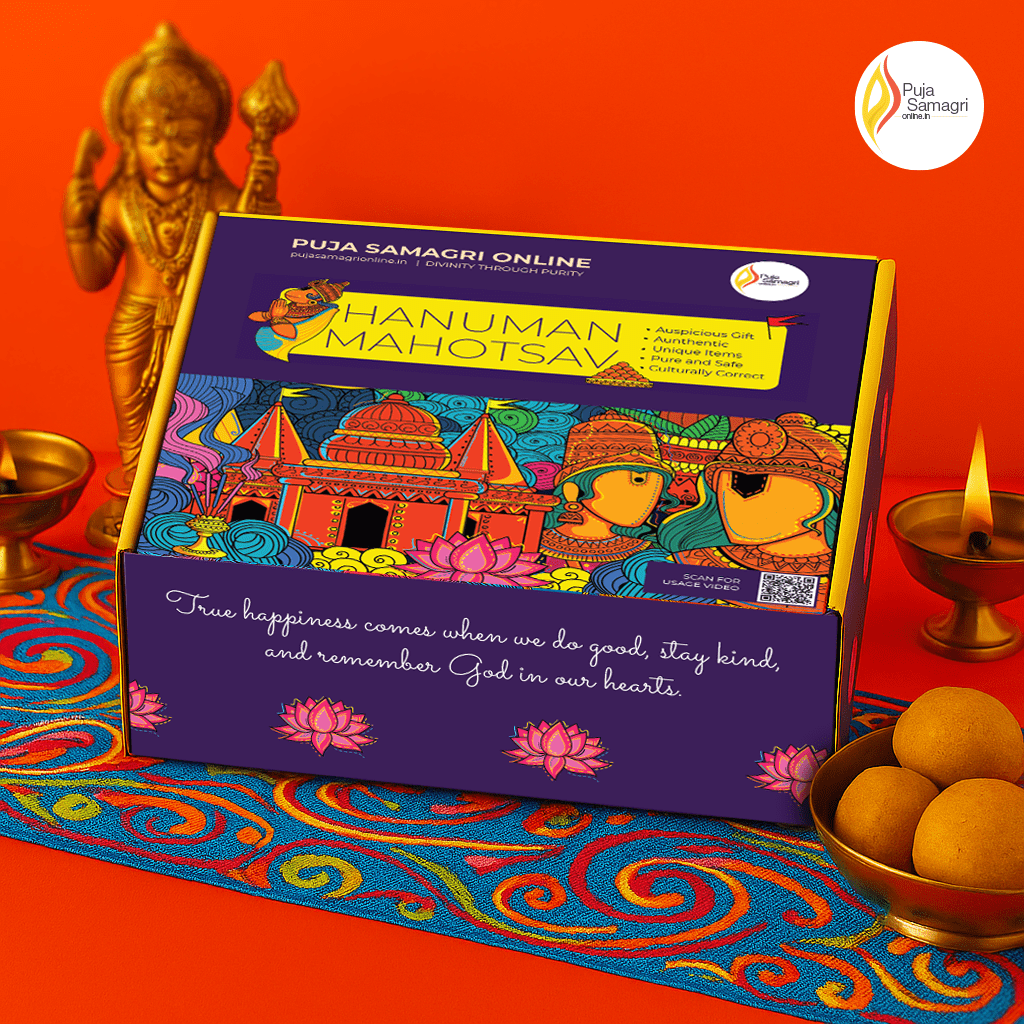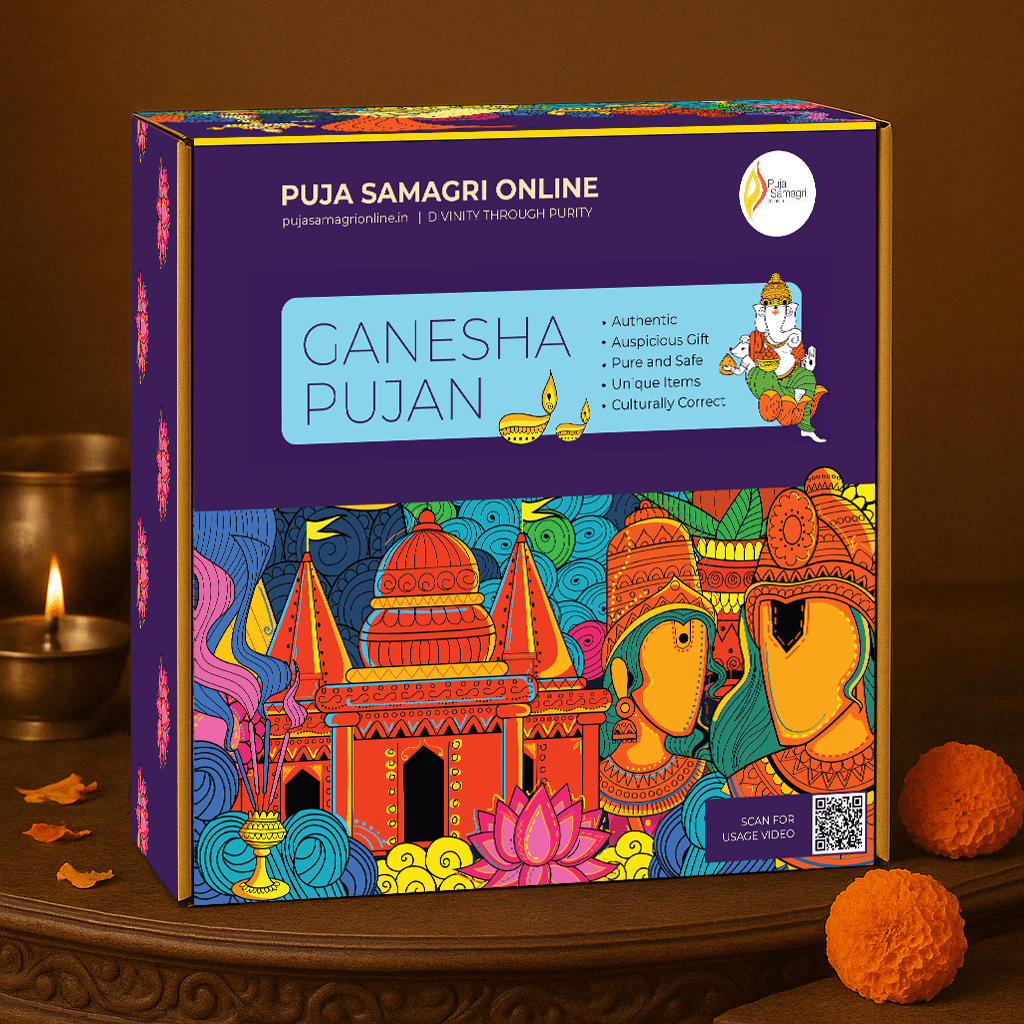INTRODUCTION
In India, puja metaphors as the source of hope, prosperity, and good health. Puja is a simple ritual of making an offering to a deity and praying to God’s Idols. Devotees offer their daily prayers in a space designated for that purpose in their home or a temple. On holidays like Lakshmi puja on Diwali, Krishna’s idol on Janmashtami, Lord Ganesha Idols puja on Ganesh Chathurthi, and so forth, special religious rituals are performed with tremendous enthusiasm and emotion.
These rituals are generally performed to commemorate reaching important milestones in life, such as weddings, the birth of a baby, to show gratitude for a major success, etc. An offering can be made in the form of flowers, fruits, or other food items while chanting mantras and using daily puja items like the lighting of diya or dhoop, ringing the puja bell, etc. India is a hub of different cultures and beliefs, there are many different types of puja, each with its own set of specific daily puja items that are used as part of the ritual.
Every ritual requires specific items to perform your daily puja fully; with your right, Puja Samagri, you garner an essential link in the quest for your divine blessings.
Significance of Doing Puja
Significance of Doing Puja
Living in an Indian household, practicing daily puja is something even your grandparent and parent have asked you to do since childhood. You must have heard them mesmerizingly reciting the unlimited benefits it brings along. But have you ever wondered what the actual significance of doing a puja is?
Puja is an important part of Hindu religious practice and is believed to have several spiritual benefits. Some of the main significance of performing puja include:
- To show devotion and reverence to the deity being worshipped
- To ask for blessings and guidance from the deity
- To offer thanks for any blessings received
- To help purify the mind and body
- To create a sense of inner peace and well-being
- To establish a connection with the divine
Puja can be performed individually or as part of a group, in a temple, at home, or in any other suitable location. Many Hindus believe that performing puja brings them closer to the divine and helps cultivate a sense of inner peace and well-being. In addition, the repetition of mantras and the focused attention required during puja can help calm the mind and bring clarity and focus.
Symbolism Behind Different Puja Items
Puja ceremonies are performed in India using a variety of objects. Depending on the style of puja being done and the deity being worshipped, different specific things may be used. Let’s together explore the significance of some of the most common daily puja items used in your puja:
- Bell: A bell is often rung during puja to signal the ritual’s beginning and end and attract the attention of the deity being worshipped.
- Diyas: Diyas are lit during puja as a symbol of the divine light and also as an offering to the deity.
- Flowers: Flowers are commonly used as offerings in puja, and different types of flowers are associated with different deities. For example, lotus flowers are often offered to the goddess Lakshmi, while marigold flowers are often offered to the god Vishnu.
- Fruits: Fruits are often offered as a symbol of abundance and prosperity and are also used as a way to show respect to the deity being worshipped.
- Incense or Dhoop: Incense or dhoop is burned during puja to purify the air and create a pleasant atmosphere, and also as an offering to the deity.
- Coconut: Coconuts are often used as an offering in puja, as they symbolize purity and selflessness.
- Water is an essential element in many puja rituals and is often used to purify the body and mind.
- Camphor Ghee wick: It is commonly used in Hindu puja rituals as an offering to the deity and is believed to have purified and sanctified properties. When burnt as a camphor wick, it is thought to help purify the air and create a sense of peace and tranquility.
- Kalash: The kalash is considered to be a symbol of abundance, fertility, and prosperity. It is believed to represent the goddess Lakshmi, the deity of wealth and prosperity. The water in the kalash is thought to represent the life-giving forces of nature, and the coconut is a symbol of life and nourishment.
- Deity’s Photo Frame: In Hindu rituals, the deity’s photo frame is also often used as a focus for meditation and prayer. Many devotees believe that by gazing upon the deity’s image and meditating upon it, they can connect more deeply with the divine and experience a sense of peace and inner calm.
CONCLUSION:
Performing daily puja is an important ritual in many Indian cultures and is believed to bring auspiciousness and positivity into one’s life. With the availability of Puja Samagri Online, it is now easier than ever to keep the tradition alive and maintain a spiritual practice in the modern world. With a wide variety of products available, it is easy to find everything you need to perform puja in the comfort of your own home.






